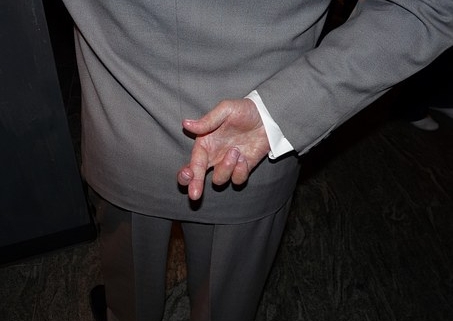June 7, 2019
Dear Drama Observers,
Every now and then, a theme emerges to the stories being told in my office. This past week, the leitmotif of my client drama tales would be revealed in the following sequence:
Act 1: Drama Person says or does something offensive.
Act 2: Drama Victim expresses displeasure.
Act 3: Drama Person utters apology-sounding words.
Act 4: Drama Victim doesn’t immediately “get over it.”
Act 5: Drama Person accuses Drama Victim of unforgiveness.
Act 6: Drama Victim tells me how Acts 1-5 are driving them nuts.
Notice the outcome here. The Drama Person starts Act 1 as the bad guy but ends Act 5 as the good guy. And that’s what Drama Person apologies are connivingly designed to accomplish.
During the Watergate proceedings, Washington Post editor, Ben Bradlee, coined the phrase non-denial denial to characterize statements coming out of the White House. Some official would utter words that sounded like he was denying wrongdoing but, upon closer scrutiny, there was no denial at all. Instead, the statement had been wordsmithed to convey the false impression of denial. Put another way, these statements were lies gussied up to sound like truth.
Such is the nature of the Drama Person’s non-apology apology. It contains apology-sounding words but, truth be known, it’s remorse on the cheap. “I apologize” is nothing more than a prompt for the Drama Victim to say, “That’s okay,” and once that happens, life can resume as usual. But if the Drama Victim misses the cue and fails to offer immediate and full absolution, the Drama Person flips the script and assumes the role of victim in the story.
To get an up-close understanding of the non-apology apology, let’s spelunk into the caverns of a Drama Person’s mind and see what’s down there. There are several features of which to take note:
- To start with, the Drama Person doesn’t have what it takes to handle personal wrongness. In response to relational friction, the automatic stance taken is: “It’s not my fault, so it must be yours.”
- But stating it that way obviously won’t go over well, so what’s needed is a trickier, more subtle approach.
- The Drama Person throws the Drama Victim a bone by uttering the words they so long to hear: “I apologize.”
- If the Drama Victim accepts the apology, that’s great. But if the sincerity of the apology is questioned in any way, that’s even greater.
- It’s greater because now, the Drama Victim can be accused of grudge-holding. The Drama Person in effect says, “I’ve done my part (apologizing) so when are you going to do your part (forgiving)?”
- This all ends with a focus-shift. It began with a focus on what the Drama Person did and ends with a focus on what the Drama Victim refuses to do.
- The ongoing relational stance has been once again affirmed: “It’s not my fault, so it must be yours.”
What we’ve discovered down there is that the non-apology apology is no apology at all. It’s a manipulative ploy to let themselves off the hook and shift responsibility to the other person. It’s an apology in name only. And that’s crazy-making.
This fits with the concepts of first-order change and second-order change.
If I’ve done something to hurt or offend you, first-order change means I’ll change because I have to. I’ve been caught and apologizing is the only way to get myself off the hook. First-order change is inherently self-focused. It’s also short-term because as soon as we’ve moved on, what’s to keep me from doing the same thing again? First-order change apologies sound like this: “I said I’m sorry. I’m not sure what else you need from me.”
Second-order change, on the other hand, means I change because I want to. I get what I’ve done to hurt you, and the remorse I feel makes me determined not to hurt you that way again. Second-order change is inherently other-focused. It’s also resilient because the memory of how I’ve hurt you serves as an ongoing restraint on my behavior. Second-order apologies sound like this: “I’m really sorry for how I hurt you. I realize now what I didn’t realize then, and I feel bad about that. If I were you, I’d be upset, too. I’m not going to let that happen again.” And then (very tellingly), change of actions follows statements of intent.
Drama People seem capable of first-order change only.
So, that’s the non-apology apology. By the way, I wouldn’t advise spelunking down into those caverns at home. It’s messy down there.
Till next week.




Hi, I love this article because it helps me to see what a true apology looks like across the board. I’m getting a lot of clarity now about a past relationship where I didn’t feel truly apologized to when my guy apologized.
Thanks, Chloe. I appreciate your taking the time to write. The situations you describe are always difficult for those going through them. I’m glad you’re gaining clarity.
I try to help the “Drama Victim” practice asking more questions – such as “What are you apologizing for?” or “What did you do that you need to apologize?” or “Who was affected by what you are apologizing for?” and other Who?, What?, When?, Where?, How? questions.
That’s very good, Glenn. I like that. But they probably won’t give direct answers to those questions because doing so would expose their manipulation.